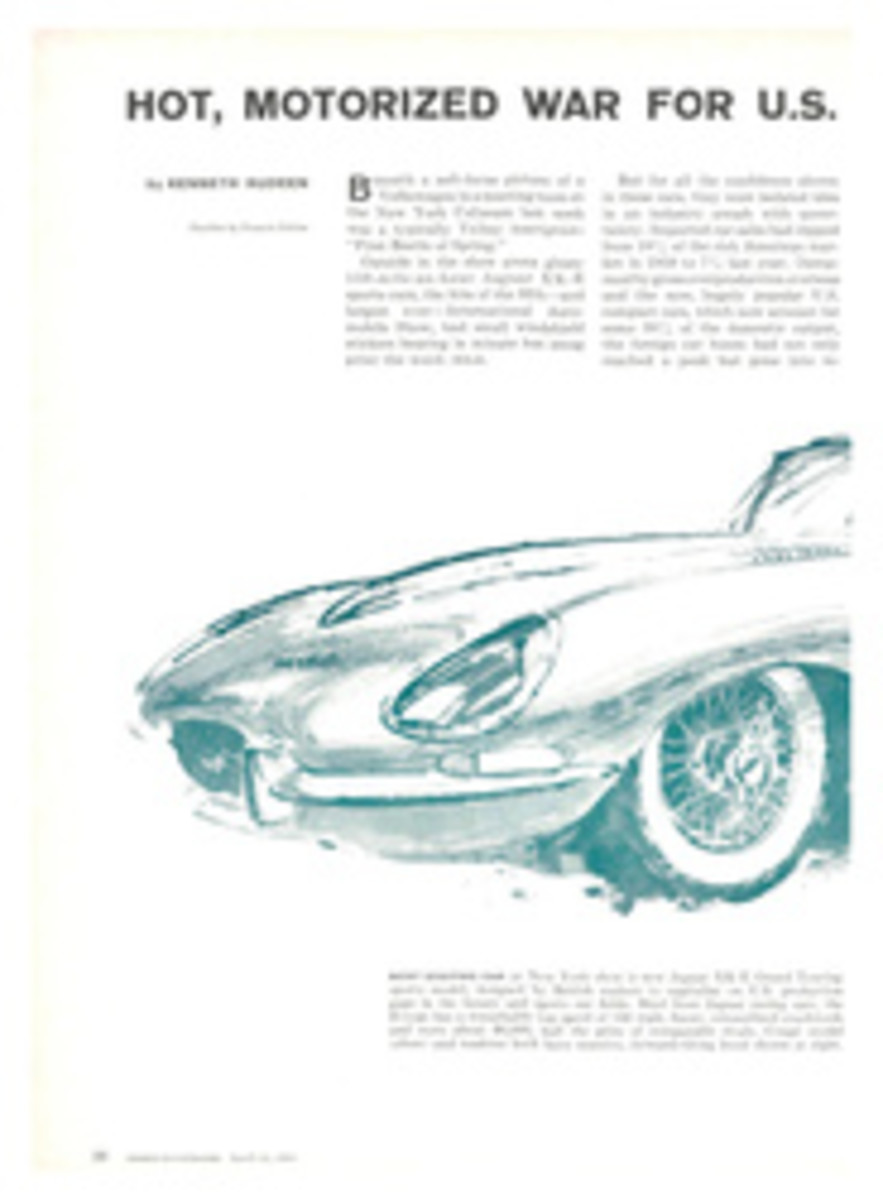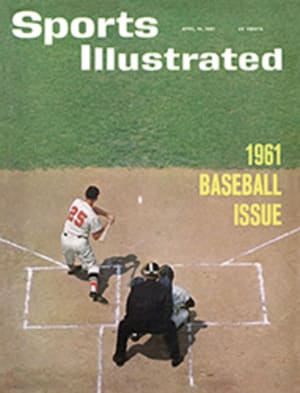
WASHINGTON SENATORS
ANALYSIS OF THE SENATORS
STRONG POINTS
Manager Mickey Vernon has relief pitching, catching and a few fading stars—which isn't too bad for a mendicant ball club. Dave Sisler (2.48 ERA) and Johnny Klippstein (2.92) were top relievers on their 1960 clubs, Detroit and Cleveland. One problem: on sketchy Washington pitching staff, these two may have to be used as starters. Pete Daley, a .263 hitter at Kansas City, gives Senators a better first-string catcher than three other AL teams. Gene Woodling, in left field, leads a short list of name players who should contribute moments of fine play. Woodling has a justified reputation as one of league's best clutch hitters. Dale Long will be at first base as much as his 35-year-old legs let him. Center Fielder Willie Tasby has good range, hit .281 with Boston last year. In two seasons, 1957-58, Dick Donovan won 31 games for the White Sox. Perhaps he will remember how he did it.
WEAK SPOTS
There are many, of course. It is doubtful that any team in major league history ever had a group of pitchers with fewer complete games to its credit the preceding season: three. (Pete Burnside had two, Hal Woodeshick one. Both are left-handers.) Bennie Daniels pitched well this spring and may become the team's best pitcher. The rest of the staff—John Gabler, Rudy Hernandez and Ray Semproch—will pitch and pray. The infield, except for Long, is a collection of rookies and weak-hitting castoffs. R.C. Stevens, a smooth-fielding ex-Pirate who hit 37 home runs at Salt Lake City, will share first with Long. Danny O'Connell, the ex-Brave and Giant, is set at second base, after a .312 season at Tacoma. Shortstop will be Coot Veal (.250 lifetime). Harry Bright and Billy Klaus, experienced hangers-on, will play third.
THE BIG IF
Will the solid relief pitching help the Senators more than power hitting will help Los Angeles? That is the hope in Washington.
ROOKIES
There are two outfielding prospects. Charley Hinton from Brooklyn (you remember Brooklyn) looks a little like Henry Aaron, and at Stockton hit very much like Aaron: .369 and 20 home runs. Joe Hicks, a White Sox hopeful a year ago, hit .303 at San Diego. Two right-handers, Joe McClain and Ed Hobaugh, were best Senator pitchers in spring, are likely starters.
OUTLOOK
It's hard to see how the club can avoid being the first 10th-place team in history. The American League's slick franchise shuffle has left the poor people of Washington with a team that might make the old Washington Senators seem like the Yankees.
YOU NEVER CAN TELL
"The least we can do is ask," said the father to his son as they watched the Senators go through their drills. The boy stood there, leaning his arms against the fence behind first base. He didn't say anything.
"Well, that's what we came down for, wasn't it?" asked the father in an annoyed tone. "See that guy drop the ball? They don't look so hot. I don't know where to go, but let's see what we can do, O.K.?"
Finally the boy spoke. "O.K."
The father looked around, spotted Coach George Susce and decided to try his luck. "Hey," he yelled to Susce. But Susce did not turn around to this vague reference.
Then the father turned to his son, asking, "Who's No. 55?"
The boy looked down at a sheet of paper, running his right index finger up and down the list, then going over it a second time before saying, "Fifty-five? That's Susce. He's a coach."
Again the father tried calling. "Hey, Susce. Hey, Coach." Susce turned around and walked to the fence.
"I brought my boy here over for a tryout," the father said proudly. "Can you help us?"
"Sure," Susce said in a warm and inviting voice. Then, holding up his gnarled right hand, on which no two fingers protruded in the same direction, the former major league catcher pointed down the left-field line. "See that guy out there along the line? He'll help you. Just go around to the gate by third. Go right on in and talk to him. He'll be glad to help you."
The father thanked Susce, turned to his son and said, "Let's go." Reluctantly, the boy pushed away from the fence. He was dressed in a white T shirt and white surfing pants that were tied with a little knot at the middle of the calves. He was tall and skinny and a trifle pale, and he walked with only half the determination of his father.
Susce started to shake his head as he watched them walk away. Then he changed his mind and said, "You can never tell. He might be a good one."
The new Senators pushed slowly through their calisthenics, George Susce serving as maestro. Before him were ranks and files of men and boys from Canada and California, from Missouri and New Jersey. Bodies were bent forward, sideward, backward; legs were stretched, strained, strengthened.
When the calisthenics were over, Susce walked to the right-field foul line. He took a five-minute breather there, then picked up half a dozen balls and called to a pair of passing players, "Over here, let's get started." Side by side the two ran back and forth as Susce rolled grounders to them. The man closer to Susce each time he threw a ball was always responsible for retrieving and returning it, but the other player always did the same running and bending.
"Just a couple more," Susce said to the panting players. "Take advantage of a cool day. You can work longer and you don't get as sweated."
When he finished with the two, Susce looked for new recruits. "O.K., two more good men. Come on, Gabler. Who's that next to you? Hey, come on over." The routine began again.
"All these kids are willing," Susce said to a bystander. "With spirit like this you can do a lot. If they are willing to get in shape, they will get in shape; and if they're in shape they'll do O.K. I was with the Athletics when they moved from Philadelphia to Kansas City, and I like this team's chances better. You find enthusiasm everywhere you look around here."
Susce dismissed the tired players and then was able to find only one unoccupied man for the next round of exercise. "O.K.," he said, "try it alone." He began tossing the ball, and almost at once another player came over and voluntarily joined in.
"See what I mean?" Susce said.
Pete Daley took his final swing in batting practice and lined the ball to left field. He sped past first base and raced toward second. As he neared it, he half dived, half tripped toward the base, bounced and rolled right over it. He wound up on his back on the edge of the infield. Laughing, he scrambled to his feet, yelling, "Wowee, what a life!"
THE FRONT OFFICE
Top man and leader of the syndicate that bought the new Washington franchise last November is Elwood R. (Pete) Quesada, who has wealth in family, retired from Air Force as lieutenant general in 1951 at age of 47 after spectacular career, was much in the news the past two years as administrator of Federal Aviation Agency. Quesada is president of club, intends to take active part in running of nonbaseball detail. The baseball side of things is in hands of handsome, gray-haired General Manager Ed Doherty, who resigned as president of the American Association to take post with Senators. Doherty was publicity director for Boston from 1939 to 1948, later was general manager of Red Sox farms at Scranton and Louisville. Strongly recommended for Washington job by American League President Joe Cronin, his old boss with Red Sox.
THE BALL PARK
The first season for Washington's new Senators is the last season for Washington's old Griffith Stadium (27,550 capacity). Next year the club expects to play in the spectacular new Washington, D.C. stadium (50,000 capacity). The old park is in a poor section of the city, a dozen blocks (10 minutes) from downtown hotel area. Parking will be inadequate if Senators have any sellout crowds. Left-field bleachers, built for the old team's home run hitters, are gone, reducing seating capacity, lengthening home run distance by 30 feet. Harry M. Stevens, Inc. has taken over concessions, formerly run by club. Otherwise things same, except for bases and home plate—Cal Griffith took the old ones with him to Minnesota. Economic note: D.C. is poor season-ticket town because there is little industry and big business in the capital to buy tickets for entertainment purposes.
[originallink:10504366:43610]
PHOTO
DALE LONG
PHOTO
GENE WOODLING
PHOTO
WILLIE TASBY
PHOTO
DICK DONOVAN
ILLUSTRATION
BILL CHARMATZ

